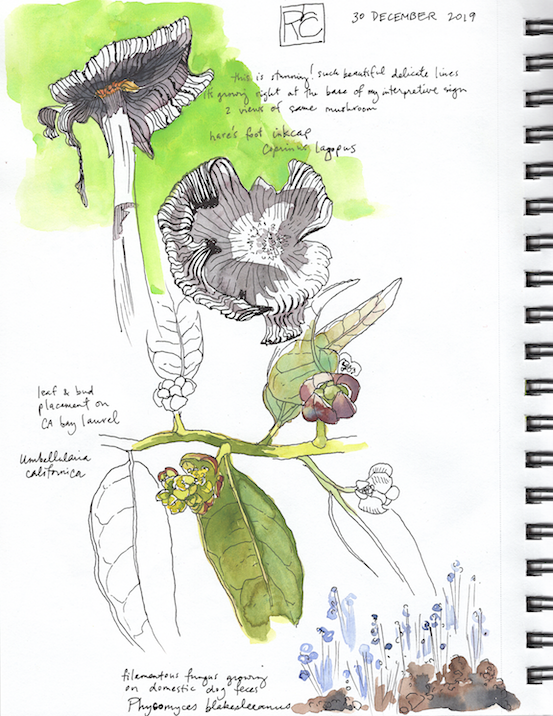I always feel better when I have a sketchbook in my pocket and a little naked if I’m out in the world without one. I’m a biologist by training and my previous career was in salmon restoration. Then and now, I use field sketching to feel closer to my surroundings and more deeply understand the world around me
In 2015, I was looking for a way to use art in a long-term project to explore local environmental change. I was moving away from data and information and into a career as a natural science illustrator and was hoping to increase my naturalist knowledge and become intimately acquainted with a local landscape. That summer, there was a wildfire in the hills to the west of my town, and one of the areas that burned was a well-loved natural area run by the University of California Natural Reserve System. I went up to take a look at the site shortly afterwards, and realized that this would be a perfect opportunity to watch rapid habitat change as the reserve responded to the fire.
I started to hike the trails at the reserve monthly, drawing and documenting everything I could. The spring after the fire, I watched the first fire-following wildflowers appear, chaparral shrubs begin to sprout new growth from their bases, and animals return to the canyon. It has now been over four and a half years since the fire. The depth of understanding that I have gained from this practice—into fire ecology and into the specifics of the habitats at the reserve—has given me immeasurable joy. You can find this journey on my blog, Wildfire to Wildflowers.
We are all watching the world change around us in unprecedented ways. With climate change accelerating, many things we once took for granted are no longer certain: weather patterns, seasons, wildfire frequencies and intensities, the composition and behavior of the plants and animals around us. Artists, naturalists and all close observers of the natural world are in a unique position to chronicle this change. We have the tools to document, analyze and share what is happening in our own neighborhoods and the environments we encounter regularly. We have a great power to become more deeply enmeshed in our world: understanding its past and watching as the present unfolds into the future.
This is ecoreportage: close observation of the environment at a specific place and time, repeatedly returning to build a picture of ecological change. As a long-time field sketcher, biologist and artist, I have focused on this practice. I want to know how my surroundings came to look the way they do and I want to understand how they change as I observe them over time. I have come to see the work as a form of journalism, requiring me to understand my subject’s past and ask probing questions about what it looks like now, compiling a detailed picture as I return again and again over the years.
Just before the pandemic, I had embarked on a new project to explore my immediate surroundings more deeply. I live in Yolo County and am working on an investigation of the history of this landscape, including all of our human impacts over time. With the latest restrictions on movement as we shelter in place, I am currently focusing on my own neighborhood, with suburban homes and agricultural research fields. What plants, animals, fungi are thriving in this built and actively managed environment? Which ones have been or are on their way to being eliminated?
As sketchers, journalers, artists, naturalists and observers, we each have our own fragments of the picture—a full understanding is something we can only discover as a community. Although sketching is often a solitary pursuit, in order to reveal the bigger picture, we must combine our own small parts. As we do, we are seeing the emergence of a great, ever-evolving tapestry of change in the natural world, in our homes, and in ourselves.
Robin’s work can be found on her website, Instagram, and Wildfire to Wildflowers blog.













